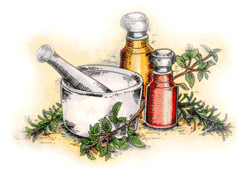 Abdominal Injury Abdominal Injury |
 Achilles Tendon Achilles Tendon |
 Ankle Bone Injury Ankle Bone Injury |
 Ankle Strain Ankle Strain |
 Ankle Synovitis Ankle Synovitis |
 Arm And Shoulder Tenosynovitis Arm And Shoulder Tenosynovitis |
 Arm Contusion, Forearm Arm Contusion, Forearm |
 Arm Contusion, Radial Nerve Arm Contusion, Radial Nerve |
 Arm Contusion, Upper Arm Injury Arm Contusion, Upper Arm Injury |
 Arm Exostosis Arm Exostosis |
 Arm Fracture, Forearm Arm Fracture, Forearm |
 Arm Fracture, Humerus Arm Fracture, Humerus |
 Arm Strain, Biceps Injury Arm Strain, Biceps Injury |
 Arm Strain, Forearm Arm Strain, Forearm |
 Arm Strain, Triceps Arm Strain, Triceps |
 Arm Strain, Upper Arm Arm Strain, Upper Arm |
 Back, Ruptured Disk Injury Back, Ruptured Disk Injury |
 Back Sprain, Lumbo Dorsal Region Injury Back Sprain, Lumbo Dorsal Region Injury |
 Back Sprain, Sacroiliac Region Injury Back Sprain, Sacroiliac Region Injury |
 Back Strain, Dorsal or Thoracic Spine Region Back Strain, Dorsal or Thoracic Spine Region |
 Back Strain, Lumbar Spine Region Back Strain, Lumbar Spine Region |
 Bee Sting Bee Sting |
 Bladder or Urethra Injury Bladder or Urethra Injury |
 Breast Contusion Breast Contusion |
 Breastbone Sprain Breastbone Sprain |
 Burns Burns |
 Buttock Contusion Buttock Contusion |
 Chest Muscle Strain Chest Muscle Strain |
 Collarbone Area Strain, Deltoid Muscle Collarbone Area Strain, Deltoid Muscle |
 Collarbone (Clavicle) Contusion Collarbone (Clavicle) Contusion |
 Collarbone Dislocation - Shoulder Joint Collarbone Dislocation - Shoulder Joint |
 Collarbone Fracture, Outer End Collarbone Fracture, Outer End |
 Collarbone Fracture, Shaft Midportion Collarbone Fracture, Shaft Midportion |
 Corneal Abrasion Corneal Abrasion |
 Dog Bites Dog Bites |
 Ear Injury Ear Injury |
 Elbow Bursitis, Radio-Humeral Elbow Bursitis, Radio-Humeral |
 Elbow Contusion, Ulnar Nerve Elbow Contusion, Ulnar Nerve |
 Elbow Contusion Elbow Contusion |
 Elbow Dislocation Elbow Dislocation |
 Elbow Fracture, Coronoid Process Elbow Fracture, Coronoid Process |
 Elbow Fracture, Epicondyle Elbow Fracture, Epicondyle |
 Elbow Fracture, Lower Humerus Elbow Fracture, Lower Humerus |
 Elbow Fracture, Radius Elbow Fracture, Radius |
 Elbow Fracture, Ulna Elbow Fracture, Ulna |
 Elbow Sprain Elbow Sprain |
 Elbow Strain Elbow Strain |
 Elbow Tendinitis or Epicondylitis Elbow Tendinitis or Epicondylitis |
 Eye Injury Eye Injury |
 Face Contusion Face Contusion |
 Snakebite Snakebite |
 Spider Bites Spider Bites |
 Tick Bites Tick Bites |
|
|
Home :: Back Sprain, Sacroiliac Region
Back Sprain, Sacroiliac Region
Violent overstretching of one or more ligaments in the sacroiliac region of the spine. When the ligament is overstretched, it becomes tense and gives way at its weakest point, either where it attaches to bone or within the ligament itself. There are 3 types of sprains:
- Mild (Grade I)-Tearing of some ligament fibers and associated muscle spasm. There is no loss of function.
- Moderate (Grade II)-Rupture of a portion of the ligament, resulting in some loss of function.
- Severe (Grade III)-Complete rupture of the ligament or complete separation of ligament from bone. There is total loss of function. A severe sprain requires surgical repair.
BODY PARTS INVOLVED
- Ligaments of the sacroiliac region.
- Sacrum (spinal region) and ilium (bones of the pelvis).
- Tissue surrounding the sprain, including blood vessels, tendons, bone, periosteum (covering of bone) and muscles.
Causes
Direct blow or stress on ligament that temporarily focus or pries the sacroilloc joint out of its normal configuration.
Signs & Symptoms
- Severe back pain at the time of injury.
- A feeling of popping or tearing in the sacroiliac area.
- Tenderness and swelling at the injury site.
- Bruising (sometimes) that appears soon after injury.
Treatment
Follow your doctor's instructions. These instructions are supplemental.
If the doctor does not apply tape or an elastic bandage:.
- Use an ice pack 3 or 4 times a day. Place ice or cubes in a plastic bag. Wrap the bag in moist towel, and place it over the injured area. Use for 20 minutes at a time.
- Wrap the lower abdomen and hips with an elasticized bandage between ice treatments.
- After 72 hours, apply heat instead of ice, if it feels better. Use heat lamps, hot soaks, hot showers or heating pads.
- Take whirlpool treatments, if available
Home Diet
During recovery, eat a well-balanced diet that includes extra protein, such as meat, fish, poultry, cheese, milk and eggs. Increase fiber and fluid intake to prevent constipation that may result from decreased activity
Prevention
- Build your strength with a conditioning program appropriate for your sport.
- Warm up before practice or competition.
-
Tape vulnerable joints before practice or competition if you have been previously injured.
back to injuries section
|
|


